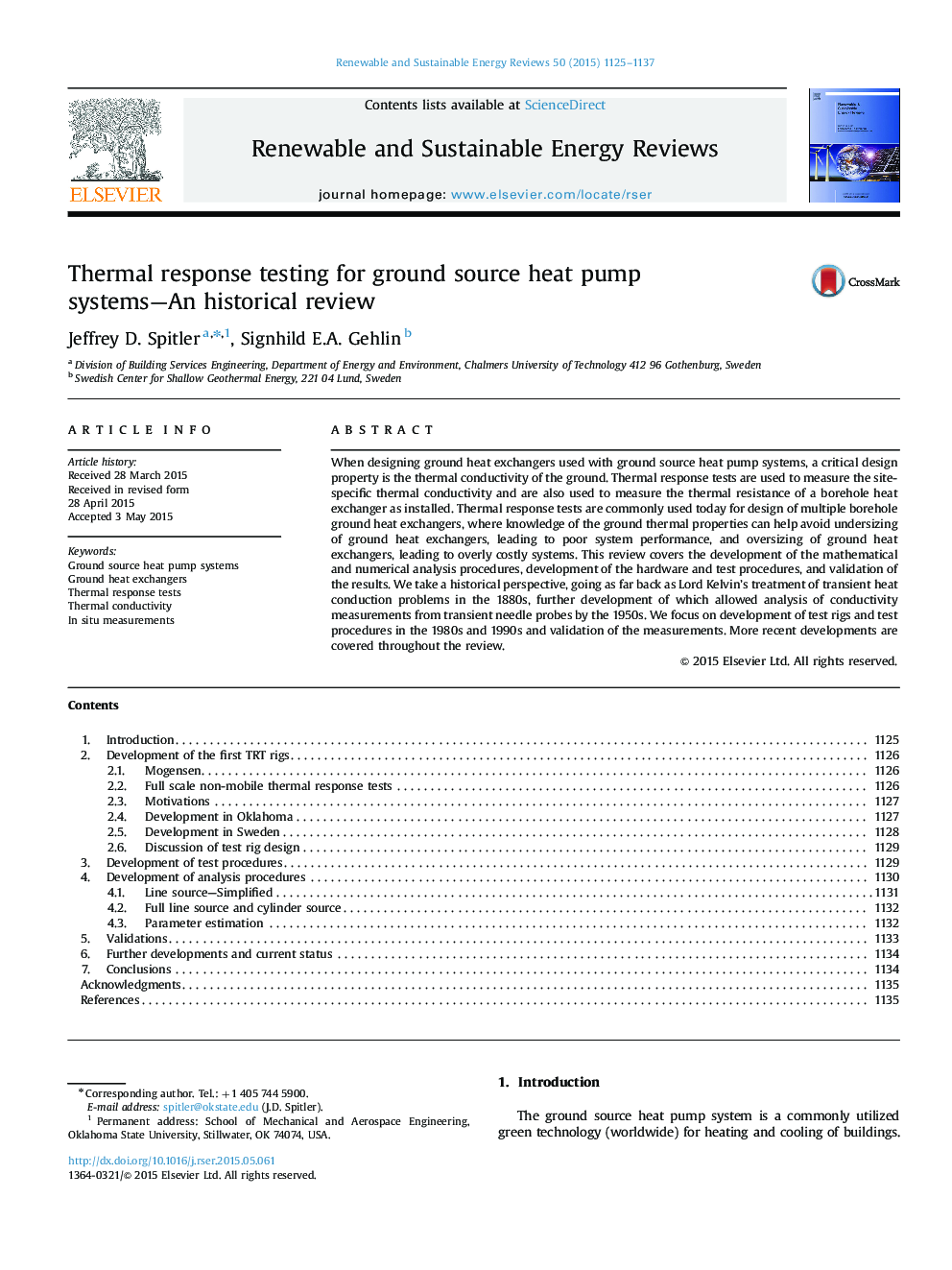| Article ID | Journal | Published Year | Pages | File Type |
|---|---|---|---|---|
| 8116300 | Renewable and Sustainable Energy Reviews | 2015 | 13 Pages |
Abstract
When designing ground heat exchangers used with ground source heat pump systems, a critical design property is the thermal conductivity of the ground. Thermal response tests are used to measure the site-specific thermal conductivity and are also used to measure the thermal resistance of a borehole heat exchanger as installed. Thermal response tests are commonly used today for design of multiple borehole ground heat exchangers, where knowledge of the ground thermal properties can help avoid undersizing of ground heat exchangers, leading to poor system performance, and oversizing of ground heat exchangers, leading to overly costly systems. This review covers the development of the mathematical and numerical analysis procedures, development of the hardware and test procedures, and validation of the results. We take a historical perspective, going as far back as Lord Kelvin's treatment of transient heat conduction problems in the 1880s, further development of which allowed analysis of conductivity measurements from transient needle probes by the 1950s. We focus on development of test rigs and test procedures in the 1980s and 1990s and validation of the measurements. More recent developments are covered throughout the review.
Keywords
Related Topics
Physical Sciences and Engineering
Energy
Renewable Energy, Sustainability and the Environment
Authors
Jeffrey D. Spitler, Signhild E.A. Gehlin,
